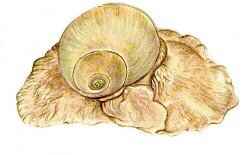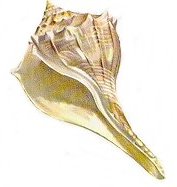Diving Activities
When just floating around isn't enough ...
- Photography & Video ...
- Lobstering ...
- Spearfishing ...
- Collecting Shellfish ...
Underwater photography can be as rewarding as it is challenging. Once the realm of professionals and determined enthusiasts willing to spend thousands of dollars on specialized and esoteric equipment, this hobby is now available to the rest of us thanks to modern developments in inexpensive but capable digital systems.
2016 Update
There is no hope of keeping up with camera technology. This page is more about basic principles than the actual equipment, which will all be obsolete in six months. Actually, strobe lights haven't changed that much.
More: Underwater Photography & Video ...
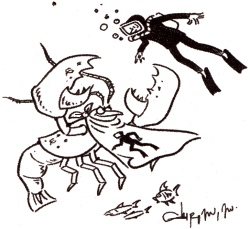
This is what it's all about. Well, for some folks anyway. Yet, I have seen many beginners totally frustrated in their attempts to catch their first 'bug'. Perhaps these pointers will help:
Lobsters haven't evolved much in the last twenty years, but lobstering sure has. For one thing, bugs are a lot fewer and a lot smaller, unless you go way out deep. For another, the regulators took away our trophies with a maximum size limit, and they've also added seasonal closures. Not that I won't grab a nice bug if I can, but lobsters are not the same game they used to be, and not my motivation in diving.
More: Lobstering ...

Most folks catch fish with hook and line. A successful fisherman combines skill, knowledge, and experience with a good deal of luck to essentially trick a fish into catching itself. If the fish won't bite, you go home empty-handed. However, scuba divers have a much more dynamic method available to them - spearfishing. Spearfishing is more akin to hunting than to hook and line fishing: rather than relying on a convincingly presented bait or lure, the spearfisherman enters the environment of his quarry and pursues it on its own terms.
More: Spearfishing ...
Something almost anyone can catch is shellfish. They really don't put up much of a fight or try to escape, so even a beginning diver can take something home for the dinner table.
More: Collecting Shellfish ...


A different sort of hunting is "bring 'em home alive". An aquarium can be a fascinating way to observe and photograph marine life, especially when the weather or season is not conducive to diving. Freshwater aquariums are easier to set up and maintain, especially for the novice, and a number of the local species of Sunfish are as attractive as anything you can buy in a store.
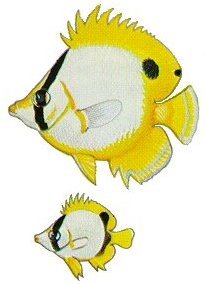
Marine aquariums are more difficult but offer many more possibilities in what you can keep - the marine environment contains many types of invertebrates and fishes that are simply not present in freshwater, such as horseshoe crabs, starfish, anemones, urchins, and many more. Many of these creatures can simply be picked up at low tide. When collecting stinging creatures such as anemones, keep them in strict solitary confinement during transport, or they will sting everything else to death, including each other. Once established in an aquarium, they are not usually a problem, as the other critters quickly learn to stay away.
More: Collecting Live Specimens ...
Fish
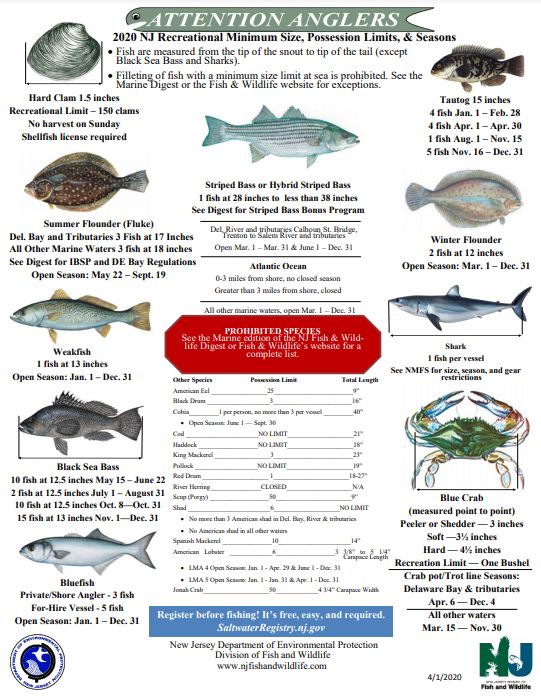
New Jersey now requires registration for saltwater fishing, including lobsters. Registration is free and can be done online at nj.gov/dep/saltwaterregistry.
This listing is for New Jersey waters only - if you cross into New York or Delaware, or Federal waters ( more than 3 miles offshore, ) you are subject to their regulations. Federal regulations supersede state regulations whenever stricter.
Lobster
More: Fishing Regulations ...
Statewide Estuarine & Marine Waters
All coastal waterbodies, except those under Waterbody Specific Advisories
- Lobster:
do not eat green gland ( tomalley ) - Striped Bass:
one meal per month
pregnant women & children - do not eat - Bluefish:
for fish over 6 pounds: six meals per year
for fish under 6 pounds: one meal per month
pregnant women & children - do not eat - American Eel:
four meals per year
pregnant women & children - do not eat
More: Health Advisories ...
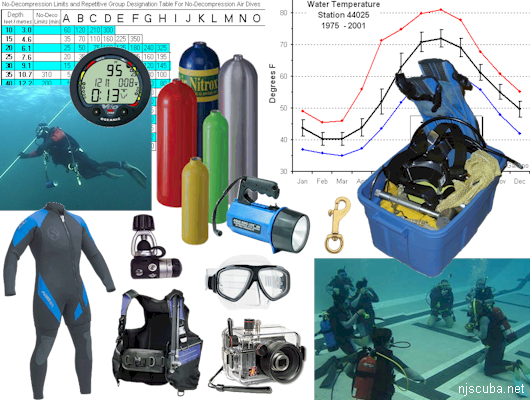
- Home ...
- Dive Sites ...
- Artificial Reefs ...
- Marine Biology ...
More important than gear is training, and more important than training is experience. You can buy gear and training, but there is only one way to get experience.
In aviation there is a saying: "You start out with a full bag of luck, and an empty bag of experience. The trick is to fill up the bag of experience before the bag of luck runs out." The same is true for diving. Take it slow. As one of my instructors said: "There are old divers, and there are bold divers, but there are no old bold divers."
When you start out in this sport, buying your first set of dive gear can be bewildering, not to mention expensive. The sad truth is that as a newly-certified diver, the equipment you have seen and used so far is not what you should be buying for real-world use. Almost all of it - jacket-style BC, weight belt, light, snorkel, etc - is more suited to floating students in a swimming pool or quarry than real-world diving. Most scuba gear is designed for the mass market of easy, infrequent, warm water diving, and is inadequate and/or inappropriate for diving around here. With so many different models and variations of everything - how do you select the best equipment for you? In the absence of any other guide, your first impulse may be to go out and buy just the same gear you were trained in - which is almost certainly an expensive mistake.
More: Scuba Gear & Training ...

